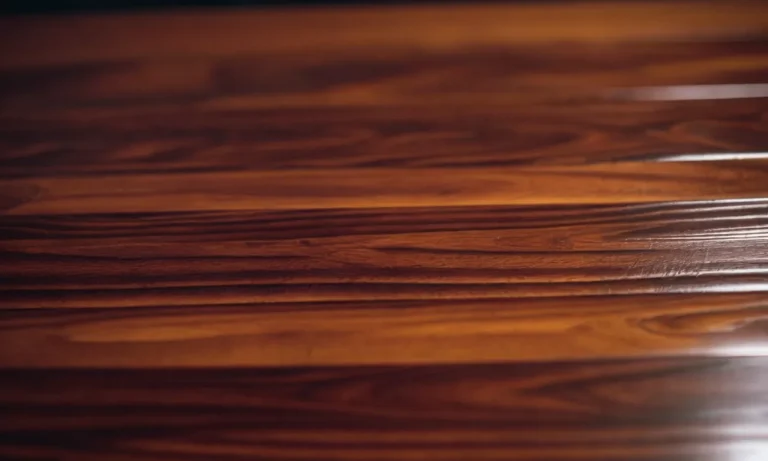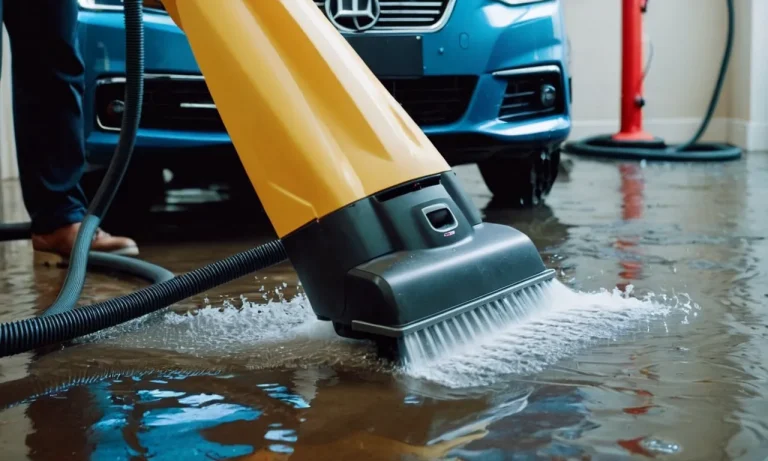Does Leaving The Freezer Door Open Damage It?
Have you ever opened your freezer door to grab some ice cream, gotten distracted, and left the door ajar for longer than you intended? If so, you may have wondered whether leaving the freezer door open can actually damage the appliance.
Freezers are designed to maintain constant cold temperatures, so what happens when the sealed environment is suddenly exposed to warmer ambient air? Let’s take a closer look at how freezers work and examine the effects of leaving the door open.
If you’re short on time, here’s a quick answer to your question: Leaving the freezer door open for a short period of time likely won’t cause damage, but leaving it open for an extended period can lead to several problems, including temperature fluctuations, frost buildup, and strain on the compressor.
How Does a Freezer Work to Maintain Cold Temperatures?
A freezer is an essential appliance in every household, keeping our food fresh and preserving it for longer periods. But have you ever wondered how a freezer manages to maintain those cold temperatures? Let’s take a closer look at the inner workings of a freezer.
Insulated walls and seals
One of the key components of a freezer is its insulated walls and seals. These are designed to keep the cold air inside and prevent warm air from entering. The walls of a freezer are made up of thick insulation materials, such as polyurethane foam, which helps to trap the cold air inside.
Additionally, the door seals are made from a flexible material that creates an airtight seal when the door is closed, further preventing any warm air from seeping in.
Refrigerant gas and compressor
Another crucial part of a freezer’s functioning is the refrigerant gas and compressor system. The refrigerant gas, usually a type of coolant like Freon, circulates through a series of coils inside the freezer.
As the gas moves through the coils, it absorbs heat from the freezer’s interior, causing the temperature to drop. The compressor, which is located at the back of the freezer, compresses the gas, increasing its pressure and temperature.
This process allows the gas to release heat and cool down, ready to circulate through the coils again.
Defrost cycle
Freezers also have a defrost cycle to prevent ice buildup. When moisture in the air comes into contact with the cold surfaces inside the freezer, it can freeze and form ice. This can reduce the efficiency of the freezer and lead to freezer burn on food.
To combat this, freezers have a defrost cycle that periodically warms up the freezer’s cooling coils. This causes the ice to melt and drain away as water, ensuring that the freezer remains frost-free and continues to operate at its optimum performance.
Understanding how a freezer works helps us appreciate the technology behind this essential appliance. Whether it’s the insulated walls and seals, the refrigerant gas and compressor system, or the defrost cycle, each component plays a vital role in maintaining the cold temperatures necessary for preserving our food.
What Happens When You Leave the Freezer Door Open?
Leaving the freezer door open may seem like a harmless mistake, but it can actually have several negative consequences for your appliance. Here’s what happens when you leave the freezer door open:
Warmer air enters the compartment
When you leave the freezer door open, the warm air from the room enters the compartment. This warm air replaces the cold air that was previously inside, causing the temperature to rise.
Temperature rises inside
As the warm air enters the freezer, the temperature inside begins to rise. This increase in temperature can lead to the thawing of frozen food items and the formation of ice crystals on the surfaces.
Moisture enters and condenses
Another consequence of leaving the freezer door open is the entry of moisture into the compartment. This moisture can come from the air or from thawing food items. Once inside, the moisture condenses on the surfaces of the freezer, leading to the formation of frost and ice.
Compressor runs overtime trying to recool
When the temperature inside the freezer rises due to the open door, the compressor of the appliance has to work harder to bring the temperature back down to the desired level. This puts extra strain on the compressor and can lead to increased energy consumption and potential damage to the appliance.
It’s important to note that the exact consequences may vary depending on the duration for which the freezer door is left open and the temperature and humidity conditions in the room. However, as a general rule, it’s best to avoid leaving the freezer door open for extended periods to maintain the efficiency and longevity of your appliance.
Potential Damages From Leaving the Door Open Too Long
Leaving the freezer door open for an extended period of time can lead to several potential damages. It is important to understand these consequences in order to maintain the efficiency and longevity of your freezer.
Fluctuating temperatures
One of the main issues that arises from leaving the freezer door open is the fluctuation in temperatures. When the door is open, warm air from the surrounding environment enters the freezer, causing the temperature to rise.
This can lead to a loss in the quality and freshness of the food stored inside. Additionally, frequent temperature fluctuations can affect the overall performance of the freezer, making it work harder to maintain the desired temperature.
Buildup of frost and ice
Another concern is the buildup of frost and ice inside the freezer. When warm air enters the freezer, it comes into contact with the cold surfaces and condenses, resulting in frost and ice formation. Over time, this can accumulate and impact the airflow and cooling efficiency of the freezer.
Excessive frost and ice can also take up valuable storage space, reducing the capacity for food storage.
Straining the compressor
Leaving the freezer door open for extended periods can put unnecessary strain on the compressor. The compressor is responsible for maintaining the desired temperature inside the freezer by circulating refrigerant.
When warm air constantly enters the freezer, the compressor has to work harder to remove the heat and bring the temperature back down. This additional strain can shorten the lifespan of the compressor and potentially lead to costly repairs.
Spoilage and bacteria growth
Leaving the freezer door open can also result in spoilage and bacterial growth. When the temperature inside the freezer rises, it creates an environment that is conducive to the growth of bacteria. This can lead to the spoilage of food items and increase the risk of foodborne illnesses.
It is important to promptly address any instances of leaving the freezer door open to minimize the potential for food spoilage and bacterial contamination.
Therefore, it is crucial to be mindful of keeping the freezer door closed and only opening it when necessary. This will help maintain the integrity of the freezer, protect the quality of your food, and ensure its longevity.
Tips to Prevent Freezer Door From Being Left Open
Use alarms or reminders
One effective way to prevent the freezer door from being left open is by using alarms or reminders. Many modern freezers come equipped with built-in alarms that alert you if the door has been left open for an extended period of time.
These alarms can be a great tool to ensure that you don’t accidentally leave the freezer door open and risk damaging your food or the freezer itself. If your freezer doesn’t have this feature, you can set reminders on your phone or use a sticky note placed near the freezer as a helpful visual reminder.
Organize items efficiently
Another tip to prevent the freezer door from being left open is to organize the items inside the freezer efficiently. When the freezer is cluttered and disorganized, it can be easy to accidentally leave the door open while searching for a specific item.
By keeping your freezer organized with clearly labeled containers and utilizing storage bins or dividers, you can make it easier to find what you need quickly and minimize the chances of leaving the door open for an extended period of time.
Check seals for problems
The seals around the freezer door play a crucial role in maintaining the internal temperature and preventing cold air from escaping. Over time, these seals can become worn or damaged, leading to gaps that allow cold air to leak out and warm air to seep in.
Regularly check the seals for any signs of wear or damage, such as cracks or tears. If you notice any issues, it’s important to replace the seals promptly to ensure that the door can close tightly and prevent any unnecessary energy loss or potential damage to the freezer.
Cover open shelves
If your freezer has open shelves, it’s a good idea to cover them with plastic wrap or use containers with lids. This simple step can help prevent items from falling out and blocking the door from closing properly.
By covering the open shelves, you can also create a barrier that reminds you to close the door fully after retrieving an item. Additionally, covering the shelves can help maintain a more organized freezer space and prevent any potential spills or leaks from spreading and causing further difficulties in closing the door.
For more information on freezer maintenance and tips, you can visit reputable websites such as Energy.gov or Good Housekeeping.
Conclusion
Leaving your freezer door open for a short time likely won’t result in damage, but leaving it open too long can lead to temperature fluctuations, frost buildup, strain on the compressor, and potential spoilage or bacteria growth.
Following tips like using alarms, organizing efficiently, checking door seals, and covering open shelves can help prevent the door from being left ajar. With proper care and maintenance, your freezer should continue working properly despite the occasional quick open-door session.







